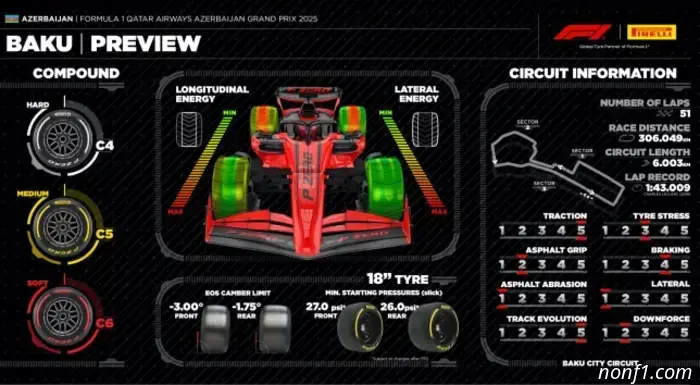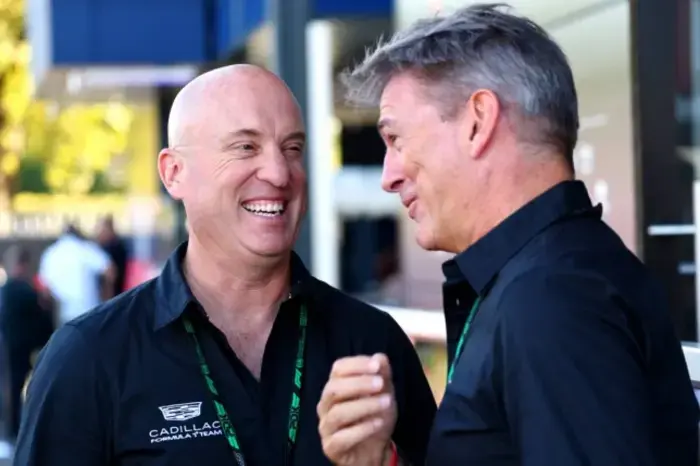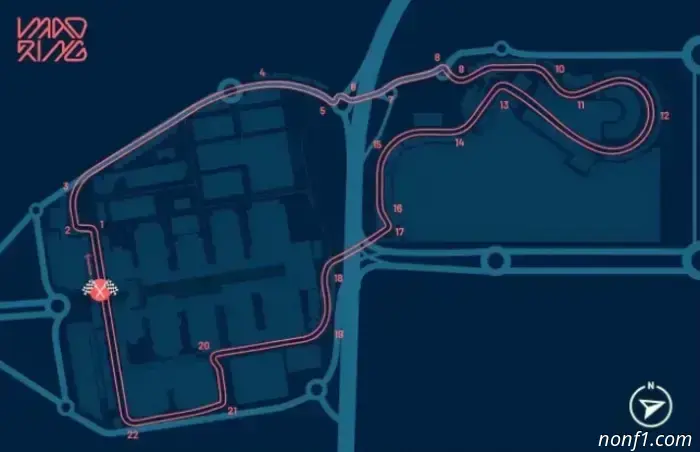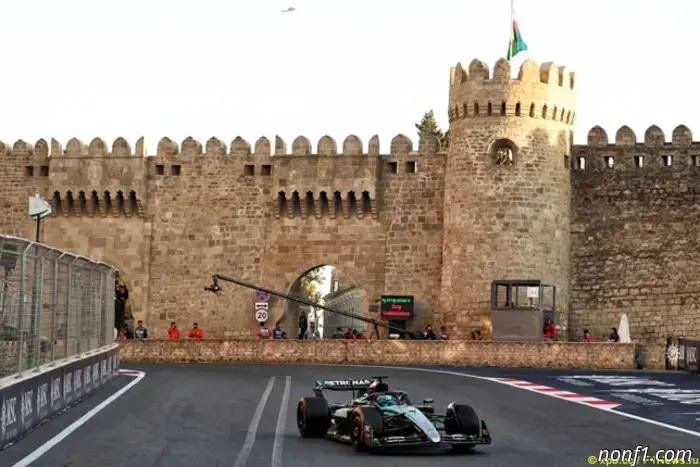
Pirelli is betting on the softest compounds.
Pirelli has brought the three softest compounds to the Azerbaijan Grand Prix, each one step softer than last year. Accordingly, C6 will be used as the Soft in Baku, the compound teams dealt with in Imola, Monaco and Montreal. C5 will act as the Medium and C4 as the Hard.
The asphalt surface of the city circuit in the Azerbaijani capital is characterised by low levels of grip and tyre wear, and if Pirelli had brought the same compounds to Baku as last year that would inevitably have meant everyone could complete the race distance with a single pit stop. Opting for the softest rubber at least makes a two-stop strategy theoretically possible.
However, as the Italian tyre-makers note, since teams and drivers have learned over the season to use their tyre life very efficiently, it is unlikely we will see a wide variety of tactical approaches. At the same time, the Baku circuit has long straights where cars reach very high speeds, so the tyres there are subjected to significant vertical loads.
While the wide start-finish straight can easily accommodate three cars side by side, on some sections of the circuit that run through the old city — for example at Turn 8 — the track narrows dramatically.
As always on circuits of this type, with walls close by drivers have almost no margin for error, and any mistake, however small, is paid for dearly. For this reason there is a high probability of yellow flags and of the safety car being deployed on both Saturday and Sunday.
The unofficial top speed record was set by Valtteri Bottas in Baku, when he reached 378 km/h in a Williams FW38 powered by a Mercedes engine during qualifying ahead of the 2016 race. Therefore engineers face the difficult task of choosing the optimal level of downforce — to achieve the desired speeds in both qualifying and the race a compromise must be found.
In Baku, on every lap the tyre surface is constantly subjected to cycles of heating and cooling, and tyre temperature can vary over a fairly wide range. On the narrowest sections of the track in the old city the tyres operate under high loads, so the tyre surface heats up to around 90 degrees.
Its temperature then falls significantly on the section that begins after Turn 16 and continues up to the braking zone before Turn 1. Front tyre temperatures at the end of the straight can be as low as 40 degrees, which can lead to braking errors in qualifying, in the race and on restarts if the safety car is deployed.
Additional factors that lead to lower tyre temperatures are shadows cast by buildings and strong winds that blow across the exposed sections of the track.

Other articles
 Dan Tauriss: I'll be satisfied if we finish eighth.
The Cadillac F1 project leader spoke about how the team's work is organized and what goals it faces in its debut season...
Dan Tauriss: I'll be satisfied if we finish eighth.
The Cadillac F1 project leader spoke about how the team's work is organized and what goals it faces in its debut season...
 Jacques Villeneuve: Bottas and Pérez — a good choice
In Cadillac's debut season, experienced drivers Valtteri Bottas and Sergio Pérez will compete for the team. The 1997 world champion believes that the American team was right to opt for experience rather than invite rookies.
Jacques Villeneuve: Bottas and Pérez — a good choice
In Cadillac's debut season, experienced drivers Valtteri Bottas and Sergio Pérez will compete for the team. The 1997 world champion believes that the American team was right to opt for experience rather than invite rookies.
 Motul is the official supplier of the McLaren team.
McLaren announced the signing of a contract with Motul, which will become the team's official supplier from 2026.
Motul is the official supplier of the McLaren team.
McLaren announced the signing of a contract with Motul, which will become the team's official supplier from 2026.
 Some tickets for the race in Madrid are already sold out.
Although there is still more than a week until the official start of presales for tickets to Madrid's debut F1 race, some have already sold out...
Some tickets for the race in Madrid are already sold out.
Although there is still more than a week until the official start of presales for tickets to Madrid's debut F1 race, some have already sold out...
 Wolff: We expect to be fighting at the front in Baku.
Mercedes team principal Toto Wolff believes the team can fight among the front-runners at the Azerbaijan Grand Prix.
People at Ford have developed enormous respect for Verstappen.
Jim Farley, CEO of Ford, emphasized that Max Verstappen plays a very important role in the American automaker's cooperation with Red Bull Racing...
Wolff: We expect to be fighting at the front in Baku.
Mercedes team principal Toto Wolff believes the team can fight among the front-runners at the Azerbaijan Grand Prix.
People at Ford have developed enormous respect for Verstappen.
Jim Farley, CEO of Ford, emphasized that Max Verstappen plays a very important role in the American automaker's cooperation with Red Bull Racing...
Pirelli is betting on the softest compounds.
Pirelli have prepared tyres in the three softest compounds for the Azerbaijan Grand Prix, which are one step softer than last year...
